How to decode संस्कृत shlokas?
The process is called अन्वयः
The natural order/connection of words in a sentence, reflecting grammatical order or relation – पदानां परस्पराकाङ्क्षा योग्यता च।
Once you learn basics of संस्कृतम्, Anvaya knowledge is critical to your progress
Why is Anvaya process critical?
Shlokas are often written ‘scrambled’ in order to meet metrical (छन्दस्) requirements
While word order does NOT normally matter in संस्कृतम् – unzipping the text in the correct sequence is critical to understand the meaning
Anvaya provides the rules to unzip the Shloka
Anvaya process has multiple steps
१ पदविभागः। Break up words
२ सन्धिः। Break up unions
३ वाक्यविश्लेशणम्। Characterize words
४ आकाङ्क्षाक्रमेण अन्वयः। Unzip in sequence
५ व्याकरणांशाः। Grammatical analysis

Example
वसुदेवसुतं देवं कंसचाणूरमर्दनम्। देवकीपरमानन्दं कृष्णं वन्दे जगद्गुरुम्
How do we unpack this shloka? By following Anvaya process!
What is the end result ?
वसुदेवसुतं देवकीपरमानन्दं कंसचाणूरमर्दनं जगद्गुरुं देवं कृष्णम् (अहं) वन्दे।
What is the general process to be followed ?
Break up words & sandhis. Here you generate the list of ‘free-standing’ component words

Then do वाक्यविश्लेशणम् . You take each of the identified words and then characterize them based on whether they are a verb, a noun, an adjective etc. This process is critically dependent on understanding the Vibhakti also
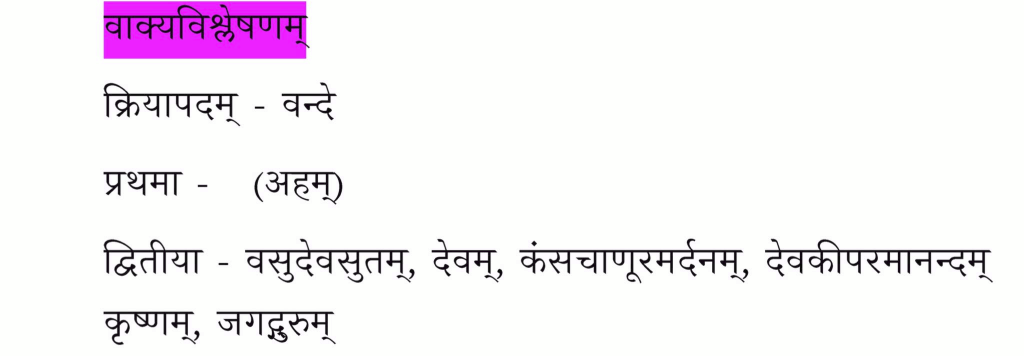
Once you have identified the individual words and then characterized the nature of the words, start the process of आकाङ्क्षाक्रमेण अन्वयः (Unzipping)
Step 1: Identify the verb (क्रियापदम्)
Step 2: Group all “same vibhakti” words
Step 3: Ask ‘questions’ in sequence to each of the words to find their ‘relation’ to the verb
Questions – किम् केन कस्मै कस्मात् कस्य कस्मिन् – who, what, for whom etc
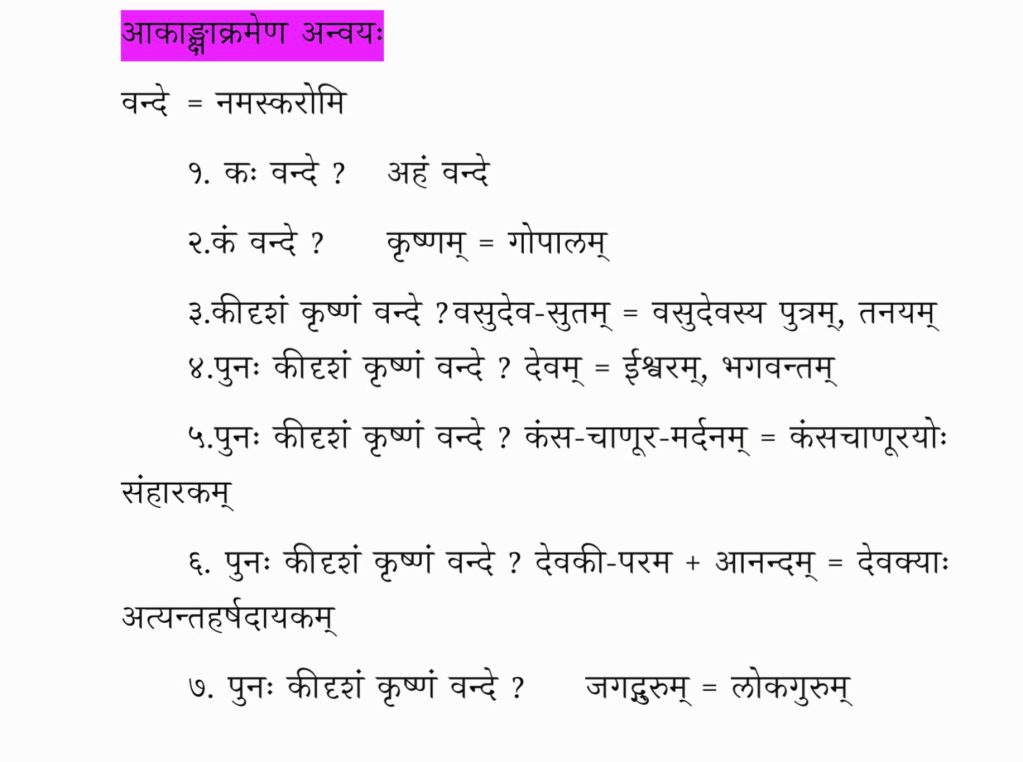
Putting together the ‘answers’ generated, in logical sequence, gives you the anvaya!
Isn’t it brilliant?

Why group same vibhakti words together?
Now why do we have this step?
Because according to the rule यल्लिङ्गं यद्वचनं या च विभक्तिर्विशेष्यस्य तल्लिङ्गं तद्वचनं सा च विभक्तिर्विशेषणस्यापि
The gender, number & case of विशेषण follows विशेष्य in संस्कृतम्!
For example, here words in द्वितीया are all adjectives for the कर्मपद – कृष्णम् (which will always be in द्वितीया in कर्तरि प्रयोगः)
So they are all describing Krishna! So [To Krishna WHO IS.. ]
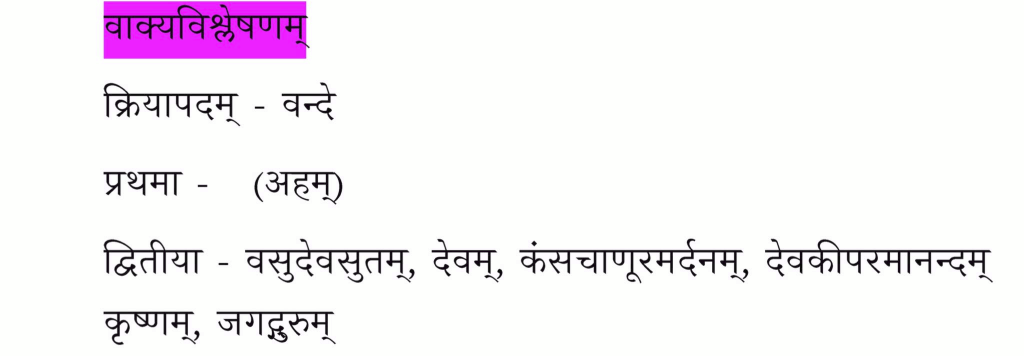
Why ask questions?
Because, each sentence has ONE verb
विभक्ति shows the relationship between the words and THE verb
प्रथमा-Who?
द्वितीया-To whom?
त्रितीया-By whom?
By asking questions in a sequence, we fully interrogate the relationship between the verb & constituent words!
Start now to master the Anvaya process!
Here are a list of wonderful resources to help you develop and hone your Anvaya skills
To formally learn the Basic Anvaya method & process in a structured manner, there is nothing better than the Shiksha lectures by Sowmya Krishnapur Bhagini
Start from video 1 : from 10 minutes onwards
Here she explains in detail the Anvaya process & runs through many examples
The Ramayana & Bhagavad Gita Supersites by IIT Kanpur are SUPERB to learn & practice how to read scriptures
http://gitasupersite.iitk.ac.in
They have anvaya, translations etc and are brilliant resources for self learning



Please check out this wonderful course by Vidwan Tilak M Rao to learn more about “Anvaya”, the technique of unpacking संस्कृत shlokas
Many people learn संस्कृतम् to know more about the shlokas – anvaya is the critical process!
To ‘read scriptures’ & kaavya, purana etc., nothing substitutes self-practice.
This is the MOST critical step
Buy Gita Press Bhagavad Gita with anvaya & padachcheda or Ramayana with anvaya and practice directly.
Chaukhamba also has wonderful editions
This is very important!
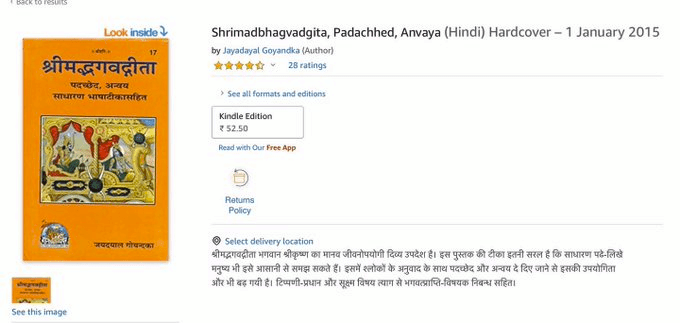
Nivedita Bhagini runs a great youtube channel with multiple free courses & lectures – Vidyadaanam
https://youtube.com/playlist?list=PLTWf5ZhGT360R4RShP8tUAoOhkhLlFdii
These are very useful to learn the process of Anvaya by understanding the examples – critical to develop the ability to read scriptures


A wonderful resource to learn basic Anvaya is the Sangkshepa Ramayanam by UoHyd
1. First chapter of Ramayana with word by word English / Hindi translation
2. Anvaya with Hindi अनुवादः।
3. Relevant Karaka / Samasa also shown
http://sanskrit.uohyd.ac.in/scl/e-readers/
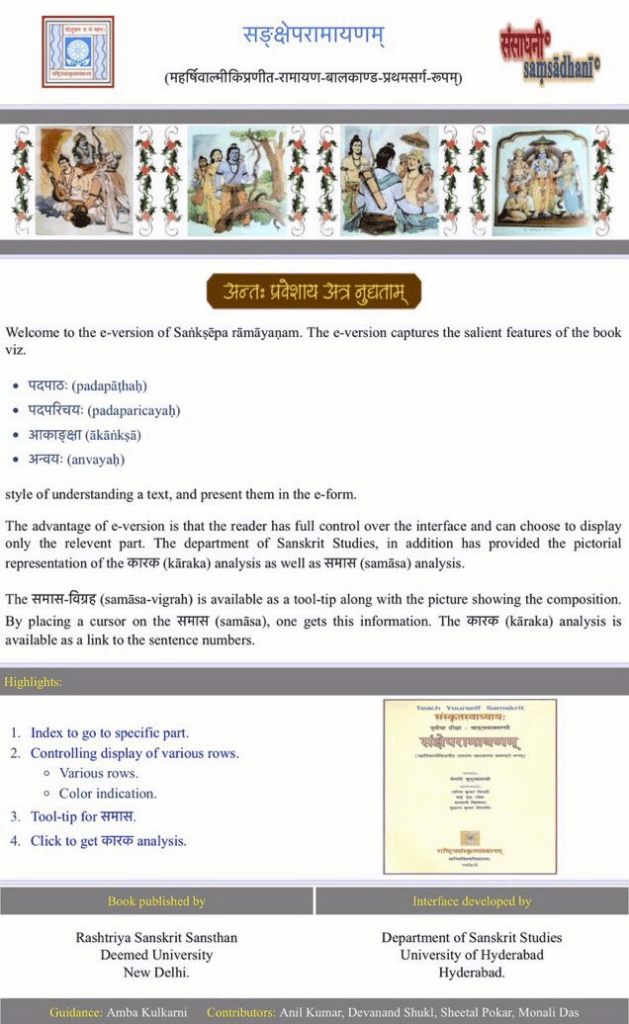


If you know Hindi, would also strongly recommend S̄rimadbhagabadgīta : padacheda-anvaya aur sādhāranabhasātīkāsahita By @GitaPress


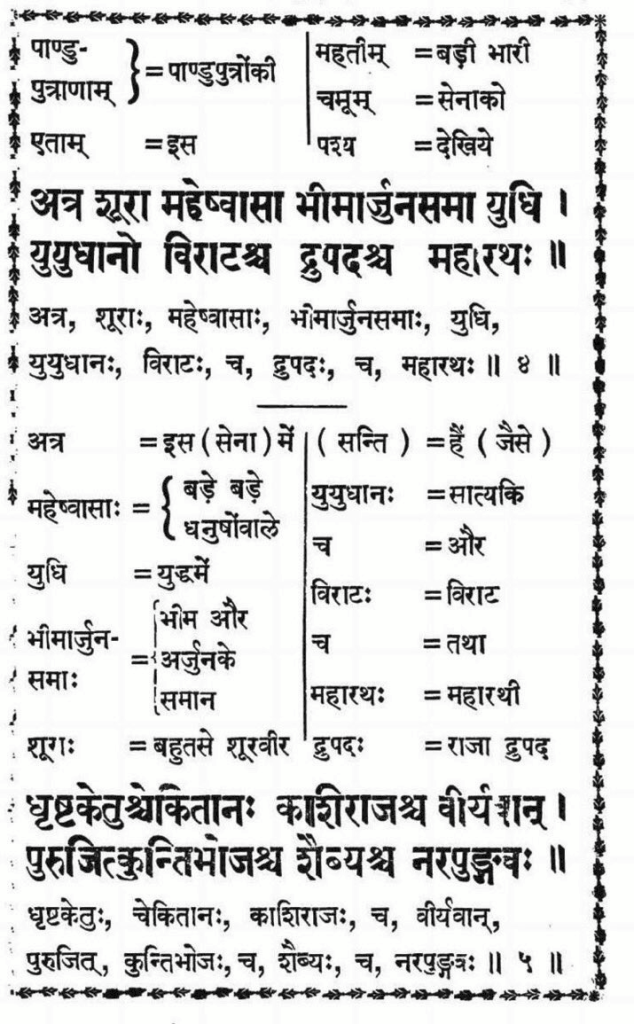
If you learn better by listening and also via auditory teaching, a great resource for learning Anvaya would be the Gita classes by Dr. Padmakumar.
Here he focuses on you learning grammar in a more natural fashion via learning the Gita
This 3 volume set provides not only the Anvaya for Bhagavad Gita, but also covers all grammatical aspects.
Vol1 starts off with संस्कृतं basics & then go on to advanced topics
So one can learn Samskritam language itself & grammar while learning BhagavadGita
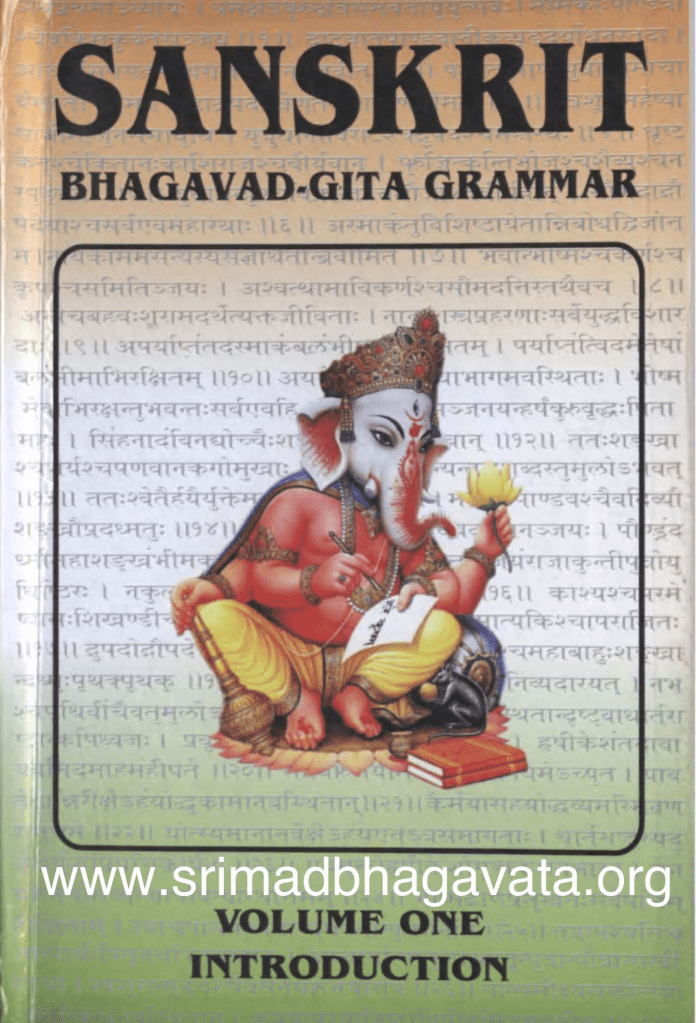


Samskrita Bharati has a multi volume series (Gita Sopanam) that covers the basics of संस्कृतम् for beginners & end with Anvaya.
This is a very well structured series
Also recommended for practicing Anvaya while learning the BhagavadGita
https://samskritabharati.in/geeta_pustakani #व्याकरणम्


Adding a good example to practice the anvaya process Bhaja Govindam – 31 shlokas with aakangksha & anvaya
Namaskaram Pvaal, this post was very educative. Something that I wanted to understand for a long time.
LikeLiked by 1 person
🙏🏼
LikeLike